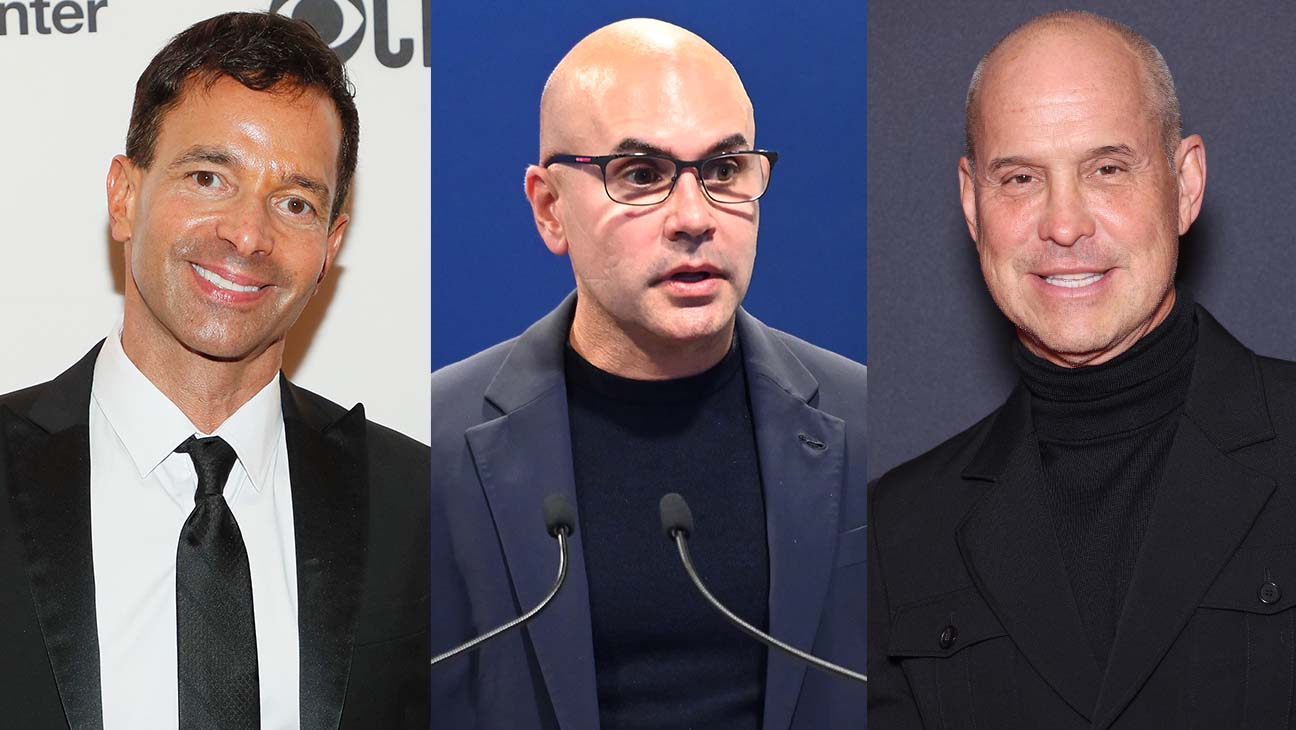

What now?
The Skydance Media deal for National Amusements appears to be dead, with the company refusing to extend its exclusive negotiating window, and sources say The Hollywood Reporter that controlling shareholder Shari Redstone is cool with the $26 billion offer from Sony Pictures and Apollo Global Management – a deal that would lead to the collapse of the empire her father built. While it is possible that Paramount’s independent governance committee believes that the regulatory concerns arising from the Apollo-Sony bid can be overlooked and recommends this deal, it appears to be an increasingly tested proposition stated.
It appears the company will be in the hands of the three-person committee consisting of CBS chief George Cheeks, Paramount Pictures’ Brian Robbins and Chris McCarthy, head of Showtime/MTV Entertainment Studios and Paramount Media Networks, for the foreseeable future. Paramount shares fell 7 percent to $12.89 at the close after the news.
For now, Paramount’s board named McCarthy “interim chief executive officer,” although it added that it did so “under the rules and regulations of the Securities Exchange Commission,” according to a securities filing. A Paramount source insists the trio are co-CEOs.
A high-level executive at a rival media company was incredulous at the latest turn of events. “[Shari] I can’t pass up one of those deals,” this person says. “If business keeps going up for them, you’re going to sell this thing for pennies on the dollar, more than it is now. How can you not take an exit?’
As for next steps, there’s speculation that Paramount could try some sort of combination of its streaming service with Peacock. “It makes sense,” said a source with knowledge of the situation. “These are the two services that will be excluded from the bundle because they do not have enough EBITA on their own.” But when it got into the details, this director added, “I don’t understand how that’s going to work. Is it Paramount+ with Showtime, Peacock plus Paramount+? I don’t know what that structure would look like.”
Paramount+ and Peacock are both subscale streaming services with approximately 100 million combined subscribers (71 million of which are Paramount+, 34 million for Peacock). Compare that to Netflix, which has about 270 million subscribers, and Disney+, which has more than 111 million (not to mention the nearly 50 million Hulu subscribers or the nearly 40 million Disney+ Hotstar subscribers that Disney also has ).

Paramount’s new “Office of the CEO”: George Cheeks, Chris McCarthy, Brian Robbins
Paul Morigi/Getty Images; Noam Galai/Getty Images; Pascal Le Segretain/Getty Images
Another source said the deal could work because the services are complementary, with Paramount+ being more masculine and Peacock more appealing to female audiences. But this person says Comcast would only consider doing so if it had oversight of the service. Control has emerged as an issue during previous negotiations between Comcast and Paramount.
Paramount+ is based on its “Mountain of Entertainment,” to use the advertising slogan, while Peacock leans more heavily on live sports, with the company streaming live WWE events like WrestleMania. This summer, the platform will be the only place where you can watch every Olympic event live from Paris.
On the library front, the combination of Paramount and Universal’s films would make a combined service formidable in terms of features, while a deal would also Yellowstone and cinematic universes of Dick Wolf. While the Yellowstone Taylor Sheridan spinoffs and other shows are streaming on Paramount+, the original hit is on Peacock, thanks to a deal struck by former CEO Bob Bakish before the company went all-in on streaming. Meanwhile, NBC and Peacock are home to Dick Wolf’s Law & authority And Chicago franchises, while his FBI franchise lives on CBS and Paramount+.
According to Comcast chief Brian Roberts, a source said, “It’s a timing game. If all these options disappear and Comcast doesn’t get an NBA package [which the company is trying to wrest from Warner Bros. Discovery]Brian doesn’t want to end up with nothing. Will he see the NBA deal fall through and make a Hail Mary bid for Paramount? He doesn’t want to be in a situation with all those irons in the fire and then the fire goes somewhere else.”
Another speculative move is that Byron Allen or another bidder could attempt to acquire BET, although one observer was skeptical that such a sale would have much impact on Paramount.
Meanwhile, Paramount executives, as well as high-level observers of the studio’s wild ride in recent weeks, are expressing skepticism about leaving the company in the hands of three top executives. “It’s such a bad idea,” says a top executive from another studio. “When has that ever worked? I can see Brian and George working together, but… ai yi yi yi yi.”
During CBS’ May 2 pre-briefing, Cheeks told reporters that he, Robbins and McCarthy will remain in their respective jobs as co-CEOs. “The clarity of the divisions will continue,” Cheeks told reporters. “In other words, I am not involved in the greenlights of Paramount Pictures and Brian is not involved in the greenlights of CBS.” Cheeks also reiterated that the trio is “in the process of finalizing our strategic plan that we will roll out as soon as possible,” but declined to provide details.
But a longtime Paramount insider offers a harsh assessment of the hydra-headed approach, which certainly took its toll when then-Time Warner CEO Jeff Bewkes attempted the top job at the studio. “They don’t complement each other,” this person says. “Robbins has never programmed an entire slate. McCarthy was lucky Yellowstone. And Cheeks is a kind of Bakish: a good bureaucrat, but no inspiration.’ (Inspiration or not, CBS just claimed its 16th straight season as the most-watched broadcast network in primetime.) Sources within Paramount claim that the three men have always gotten along well.
Co-CEOs are rare at large companies, and many who tried the idea have since abandoned it. Software vendor Salesforce briefly had founder Marc Benioff co-lead the company with Bret Taylor, a co-CEO relationship that lasted just 18 months.
But there are success stories, and one of Paramount’s biggest competitors is one of them.
In July 2020, amid the COVID-19 pandemic, Netflix appointed Ted Sarandos as co-CEO alongside founder Reed Hastings. “This change formalizes what was already informal: Ted and I sharing leadership of Netflix,” Hastings said at the time. “As co-CEO, there are two of us full-time. It’s not like a part-time contract.”
However, that arrangement was part of Hastings’ succession planning. Two and a half years later, he formally stepped aside, transitioning to a role as executive chairman and elevating Greg Peters to co-CEO alongside Sarandos. Paramount’s current leadership structure did not have that extended runway. And there’s another crucial difference between Netflix’s C-suite and Paramount’s: Netflix gave Sarandos and Peters clear lines of oversight, with Sarandos overseeing content and marketing and Peters in charge of product, gaming and advertising.
One Paramount source says it’s not yet clear how the three executives will divide oversight of some of the company’s non-content business areas, such as operations, streaming, advertising and licensing, a concern that appears to be top of mind for Wall Street to stand.
The trio’s elevation “raises several questions that we believe remain unanswered,” Bank of America’s Jessica Reif Ehrlich wrote on April 30. “These include: 1) who makes the strategic decisions at the company; 2) what are the timing/terms of a potential sale (as has been the subject of several media reports); and 3) what would be the strategic direction of the company if no transaction is consummated and current ownership remains in control?
The analyst warned that Paramount stock will remain “volatile” until there are more definitive answers.
In fact, in the wake of Bakish’s ouster, several analysts said they viewed the “CEO’s office” as a temporary structure, intended only to be maintained so a deal could be struck.
These views will probably now have to be reevaluated. To quote Naveen Sarma of S&P Global, “We believe such a shared management structure is not sustainable for Paramount Global, or any publicly traded company, beyond a short transition period.”
Lesley Goldberg contributed to this report.
Leave a Reply